Planting food plots is a popular practice among landowners in Texas who want to supplement the diets of wildlife during times of stress or when nutritious native forage may be lacking in the environment.
Food plots are also a great way to attract and manage wildlife for hunting purposes. While planting cool-season food plots in Texas typically takes place from September through October, preparation should begin sooner. Soil testing is highly recommended to ensure that the soil is properly prepared for planting.
When it comes to planting food plots in Texas, timing is everything. The best time to plant food plots in Texas depends on the type of crop, the location, and the intended use. For example, warm-season food plots are usually planted in the spring and summer, while cool-season plantings are food plots that grow during the fall and winter.
In most places, Texas included, fall and winter food plots outnumber spring food plots. It is important to choose the right seeds and prepare the land before planting to ensure the best possible results.
Key Takeaways
- Proper preparation is key to successful food plot planting in Texas.
- The best time to plant food plots depends on the type of crop, location, and intended use.
- Choosing the right seeds and preparing the land are essential to ensure the best possible results.
More on this category:
- When to Plant Fig Trees in Louisiana?
- When to Plant Cucumbers in North Florida?
- When to Plant Cucumbers in Central Florida?
Understanding Food Plots
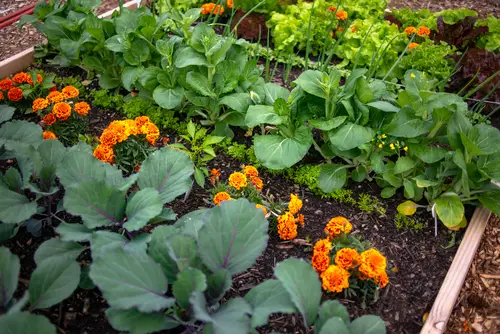
Food plots are an essential tool for landowners in Texas who want to attract and maintain wildlife populations on their property. A food plot is a small area of land that is planted with crops specifically designed to provide food for wildlife.
These plots can be used to supplement the diets of deer, turkey, quail, and other game animals, especially during periods of the year when natural forage is scarce.
Food plots can be established on a variety of land types, including agricultural fields, pastures, and even wooded areas. The key to a successful food plot is selecting the right location and planting the right crops.
Landowners should choose a location that is easily accessible for wildlife and has good soil quality. They should also consider the size of the plot and the types of crops that will grow well in their area.
When it comes to selecting crops for a food plot, landowners have many options. Cool-season crops like clover, wheat, oats, and winter peas are typically planted in early spring (February to March) and provide a nutritious forage option for deer and other wildlife.
Warm-season crops like soybeans, corn, and sorghum are typically planted in late spring (April to May) and provide a high-energy food source for wildlife during the summer months.
It’s important to note that food plots require ongoing maintenance to ensure their success. This includes regular mowing, fertilization, and weed control. Landowners should also monitor the plot for signs of disease or insect infestation and take appropriate action if necessary.
When to Plant Food Plots in Texas
Planting food plots for wildlife has long been used by landowners in Texas as a means to supplement the diets of wildlife during times of stress or during periods of the year when nutritious native forage may be deficient or lacking in the environment.
However, the timing of planting food plots can vary depending on the region and weather conditions.
In Texas, the best time to plant food plots for white-tailed deer is during the fall and spring seasons. In the fall, the ideal time to plant is between September and October.
During this time, the cooler temperatures and increased rainfall provide optimal growing conditions for cool-season forages like clover, wheat, and rye. These forages can germinate quickly and establish a good root system before the onset of winter.
In the spring, the best time to plant is between February and April. During this time, the warmer temperatures and increased daylight hours provide optimal growing conditions for warm-season forages like soybeans, cowpeas, and sorghum.
These forages can provide a good source of nutrition during the summer months when native vegetation may be less nutritious. It is important to note that the timing of planting food plots can vary depending on the weather conditions in a particular region.
For example, in north central Texas, perennial warm season mixes should be planted between December 1st and April 15th, while annual warm season mixes would be planted after the last expected frost for the area.
In addition, landowners should also consider the specific needs of the wildlife in their area when deciding when to plant food plots. For example, if a landowner is planting food plots for dove hunting, they should include plants that produce large seeds or grains like sunflower, millet, sorghum, and sesame.
These plants should be planted in the late summer or early fall to provide optimal growing conditions for the dove season.
Choosing the Right Seeds
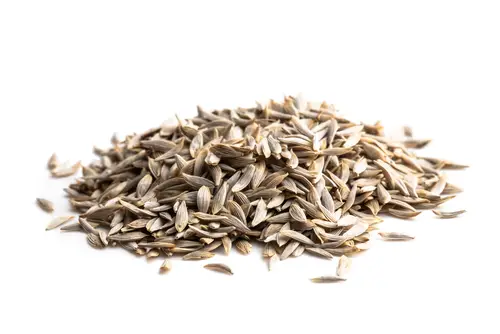
When it comes to planting food plots in Texas, choosing the right seeds is crucial. There are a variety of seeds available, each with its own unique benefits.
Clover, oats, peas, wheat, beans, soybeans, corn, brassicas, clovers, sunflower, rye, millet, native plants, sorghum, alfalfa, cool-season crops, legumes, cool season annuals, chicory, and turnips are some of the most commonly used seeds for food plots in Texas.
Legumes, such as clovers and peas, are great for adding nitrogen to the soil and can improve soil quality for future plantings. Cool-season crops, such as wheat and oats, are ideal for planting in the fall and can provide early-season forage for wildlife.
Brassicas, such as turnips and radishes, are excellent for attracting deer and other wildlife due to their high protein content. Sunflowers are also a great option for attracting birds and other wildlife.
When choosing seeds, it’s important to consider the soil type, climate, and purpose of the food plot. Some seeds may do better in certain areas or under certain conditions.
It’s also important to consider the timing of planting. Cool-season annuals should be planted in the fall, while warm-season annuals should be planted in the spring.
Preparing the Land
Before planting food plots in Texas, it is important to prepare the land properly. This involves several steps to ensure that the soil is healthy, and the plants have the best chance of growing successfully.
First, it is recommended to have the soil tested to determine its pH level and nutrient content. This information can help determine what type and how much fertilizer is needed to promote healthy plant growth.
It is also important to consider the type of soil in the area, as some soils may require additional amendments to improve their quality.
Next, it is important to consider the amount of rainfall and moisture in the area. If the area is experiencing a drought, it may be necessary to irrigate the food plots to ensure that they receive enough water to grow properly. Disking the soil can also help to break up hard soil and allow moisture to penetrate more easily.
When preparing the land, it is important to remove any debris or vegetation that may interfere with the growth of the food plot. This can be done by mowing or using a brush hog to clear the area.
Finally, it is important to apply fertilizer to the soil before planting the food plot. This can be done by broadcasting the fertilizer over the area or by using a seed drill to apply the fertilizer directly to the soil.
It is important to follow the manufacturer’s instructions for application rates and timing to ensure that the fertilizer is applied correctly.
Planting and Maintenance
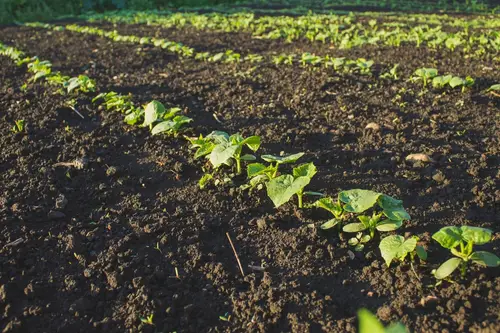
When it comes to planting food plots for white-tailed deer in Texas, timing is everything. Planting at the right time can help ensure a successful crop, while planting too early or too late can result in a lack of growth or an unhealthy crop.
For cool-season food plots, it is recommended to plant between February and March. This includes crops like clover, wheat, oats, and winter peas, which provide a nutritious forage option for deer and other wildlife.
Late spring, from April to May, is ideal for warm-season food plots, which include crops like soybeans, corn, and sorghum.
In terms of maintenance, mowing can help promote growth and keep the plot healthy. It is recommended to mow the plot to a height of 6-8 inches, which can help reduce competition from weeds and other plants. However, it is important to avoid mowing too frequently or too short, as this can damage the crop and reduce its overall yield.
Weed control is also an important aspect of maintaining a healthy food plot. This can be done through manual removal, herbicide application, or a combination of both. When using herbicides, it is important to follow all instructions carefully and to choose a product that is safe for the specific crop being grown.
Food Plots for Hunting
Food plots are an essential part of hunting in Texas. They are used to attract deer, game birds, and doves to a specific area, making it easier for hunters to find and hunt their prey.
Food plots are also used to provide a supplemental food source for wildlife during times of stress or when nutritious native forage may be deficient or lacking in the environment.
When it comes to deer hunting, fall and winter food plots are the most popular wildlife plantings in Texas. These plots are typically planted in late summer or early fall to provide a food source during hunting season.
Strip width can vary, but the wider the strips, the more food created for whitetail deer. The closer the food plot is to good dense cover, the more use it will have by wildlife.
Two factors will help determine which crops to plant in your food plot. The first is the time of year you plan to hunt. The second is the type of soil and weather conditions in your region.
Warm season legumes and other spring food plots in Texas can be planted from late March to mid-April. Some popular crops for fall and winter food plots include wheat, oats, rye, and clover.
Planting food plots for game birds and doves can also be a great way to attract these animals to a specific area. Some popular crops for doves include sunflowers, millet, and sorghum. Game birds such as quail and pheasant prefer a mix of grasses and legumes in their food plots.
Managing Wildlife and Livestock
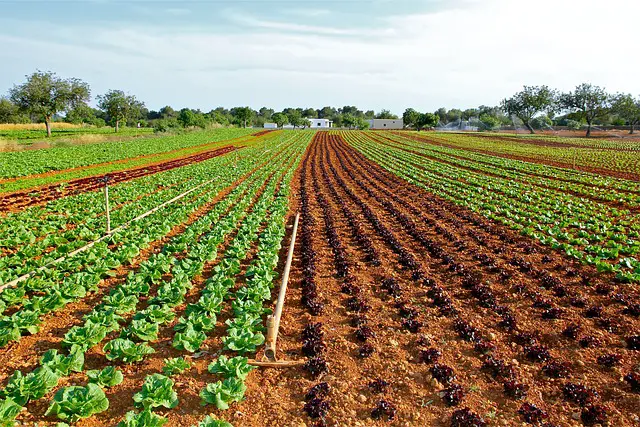
Planting food plots is an effective way to manage wildlife and livestock in Texas. Food plots provide supplemental nutrition to deer, game, and birds during times of stress or when nutritious native forage may be deficient.
The establishment of locally adapted annual or perennial forages on suitable soils provides suitable supplemental food and cover for target species during critical periods of the year.
Supplemental protein is especially important for deer during antler growth and fawning season. Food plots can also be used to attract game for hunting purposes or to increase viewing and photographing opportunities.
Livestock must be excluded from food plots to prevent overgrazing and trampling of the forage. Feral hogs can also be a problem in food plots, as they will root up and destroy the forage. It is important to manage feral hog populations through trapping and hunting to minimize damage to food plots and other agricultural crops.
Forbs, or broadleaf plants, can be important components of food plots for wildlife and livestock. Forbs provide a source of protein and other important nutrients, as well as cover for small game and birds. Forbs can be planted as a mix with grasses or as a pure stand, depending on the desired outcome.
In Texas, cool-season food plots should be planted in the fall between September and November, while warm-season food plots should be planted in the spring between March and May. Planting dates may vary depending on the region and climate conditions.
Understanding Regulations
When it comes to planting food plots for white-tailed deer in Texas, it is important to understand the regulations governing such activities. Texas Parks & Wildlife Department (TPWD) has specific rules and guidelines that must be followed to ensure compliance with state laws.
One important regulation to keep in mind is baiting regulations. Baiting is the practice of luring deer to a specific area with food, and it is illegal in Texas. Planting food plots is not considered baiting, but it is important to ensure that the food plot is not used to concentrate deer in a specific area.
Another important regulation to consider is the timing of planting. Planting food plots outside of the recommended planting window can result in poor growth or no growth at all.
In Texas, the recommended planting window for food plots is typically between early September and early October. However, the exact timing may vary depending on the location and climate.
It is also important to consider the type of seeds and plants used in the food plot. Some seeds and plants may be invasive and harmful to the local ecosystem. TPWD recommends using native plants and seeds that are well-suited to the local climate and soil conditions.
In addition to TPWD regulations, landowners and managers should also be aware of any local ordinances or regulations that may apply to food plot planting. These regulations may vary depending on the county or municipality.
Additional Resources
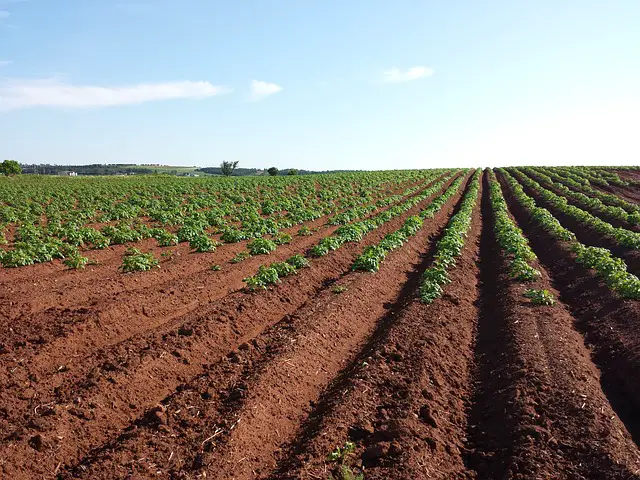
For those looking for more information on planting food plots in Texas, there are several resources available. The Texas A&M AgriLife Extension offers a wealth of information on wildlife management and habitat improvement, including food plots for deer and other wildlife.
The extension’s website provides access to research-based information, publications, and educational programs that can help landowners and hunters make informed decisions about planting food plots.
One expert in the field of wildlife management is Dr. James Kroll, also known as “Dr. Deer.” Dr. Kroll is a professor at Texas A&M University and has decades of experience in deer research and management.
He has authored numerous publications on the subject, including “Deer Management 101” and “Deer Management for Texas Landowners.” Dr. Kroll’s expertise can be a valuable resource for those looking to improve their knowledge of deer management and food plot planting.
In addition to the resources offered by the Texas A&M AgriLife Extension and Dr. Kroll, there are also many online forums and discussion groups dedicated to wildlife management and hunting in Texas.
These forums can be a great way to connect with other hunters and landowners, share information and ideas, and learn from the experiences of others. Some popular forums include Texas Hunting Forum, Texas Bowhunter, and Texas Hunting and Outdoors.
Frequently Asked Questions
What can I plant for a deer food plot in Texas?
There are several options for planting a deer food plot in Texas. Some of the popular choices include clover, wheat, oats, winter peas, and soybeans. These plants provide a nutritious forage option for deer and other wildlife.
When should I start a food plot for my deer?
The best time to start a food plot for deer in Texas depends on the type of plants you want to grow. If you want to plant cool-season crops like clover, wheat, oats, and winter peas, then the ideal time to start planting is in early spring (February to March).
On the other hand, if you want to plant warm-season crops like soybeans, cowpeas, and lablab, then late spring (April to May) is the best time to start.
What month should you plant food plots?
The best month to plant food plots in Texas depends on the type of plants you want to grow. For cool-season crops, the best time to plant is in early spring (February to March), while for warm-season crops, the best time to plant is in late spring (April to May).
What is the best food plot for deer in North Texas?
The best food plot for deer in North Texas depends on the location and soil type. Some of the popular options include winter wheat, clover, and brassicas. These plants provide a nutritious forage option for deer and other wildlife.
What are the best oats to plant for deer?
The best oats to plant for deer in Texas are the winter oats. These oats can withstand the harsh winter conditions in Texas and provide a nutritious forage option for deer and other wildlife.
What are Iron and Clay cowpeas?
Iron and Clay cowpeas are a type of legume that is commonly used in food plots for deer in Texas. These cowpeas are highly drought-resistant and can grow in a wide range of soils. They provide a nutritious forage option for deer and other wildlife.

Hey, I’m Lisa and I’ve been an avid gardener for over 30 years. I love writing, talking and living in the garden! Feel free to connect with me on my socials below

